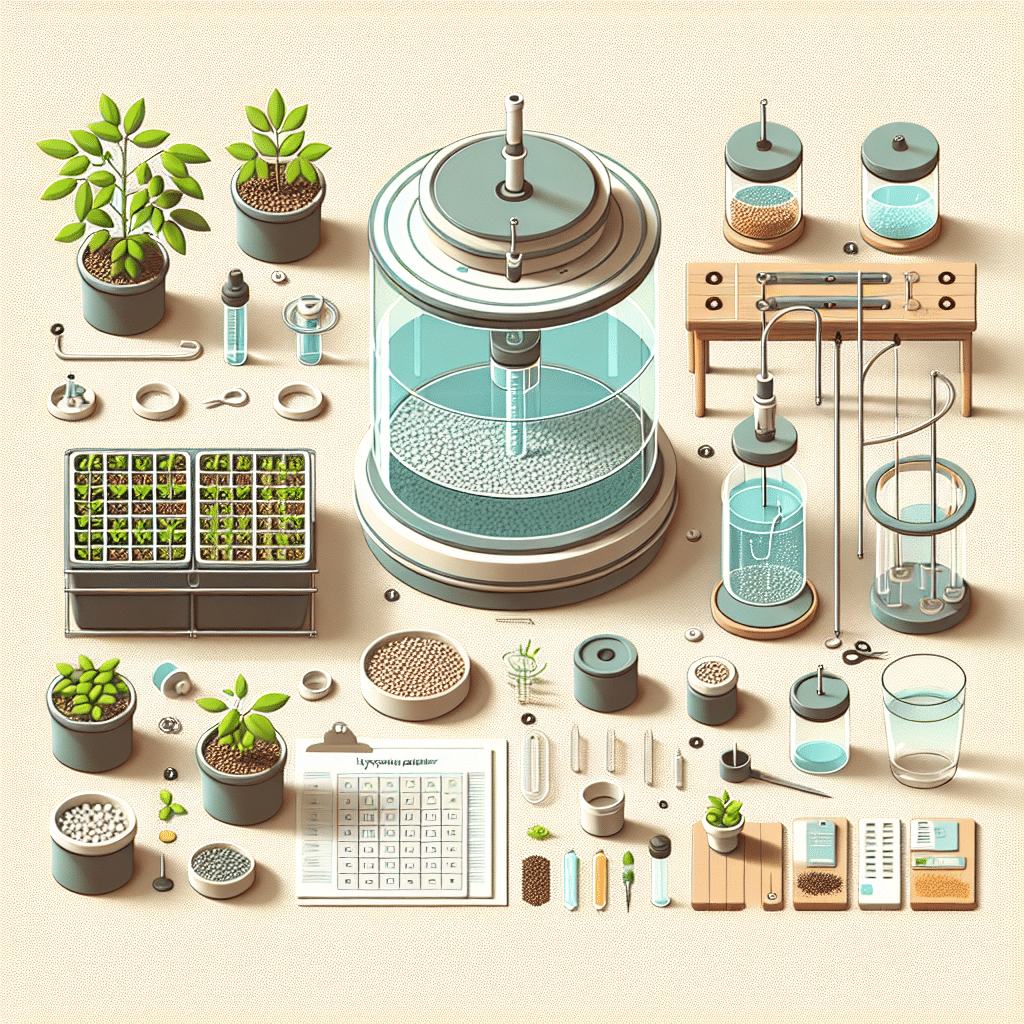Step-by-Step Guide for Creating Your Own Hydroponic Planter
Understanding Hydroponics
Hydroponics is a method of growing plants without soil, using nutrient-rich water instead. This technique allows for faster growth, higher yields, and more efficient use of water. Before you begin creating your hydroponic planter, it’s essential to understand the various systems available, including Deep Water Culture (DWC), Nutrient Film Technique (NFT), and Ebb and Flow systems.
Materials Needed
- Container: A plastic tote or tub is ideal for a DWC system. Ensure it’s opaque to prevent light from entering.
- Net pots: These will hold your plants and allow roots to grow through.
- Growing medium: Use hydroton, rock wool, or coconut coir for better drainage and aeration.
- Air pump and air stone: An aquarium air pump will supply oxygen to the water, which is crucial for plant health.
- Nutrient solution: Purchase a pre-mixed hydroponic nutrient solution that contains essential macro and micronutrients.
- Water: Use distilled water or tap water that has been treated to remove chlorine and other chemicals.
- pH test kit: Maintaining the right pH level (between 5.5 and 6.5) is crucial for nutrient absorption.
- Ruler: For measuring your growing setup accurately.
Steps to Create Your Hydroponic Planter
Step 1: Choose Your Location
Select an appropriate location with adequate light (preferably natural sunlight) or prepare to use grow lights if natural light is insufficient. Consider temperature, humidity, and airflow to ensure a stable environment for your plants.
Step 2: Prepare the Container
- Drill Holes: Use a drill to create holes in the lid of your container that are slightly larger than your net pots. Space them evenly for optimal growth.
- Clean the Container: Thoroughly clean the container to eliminate any residual chemicals or contaminants.
Step 3: Assemble the Hydroponic System
- Install Air Pump: Connect the air pump to the air stone with tubing and place the stone at the bottom of the container. This setup will aerate the water, keeping it oxygen-rich.
- Fill the Container: Add water to the container, leaving enough space for the nutrient solution.
- Mix Nutrient Solution: According to the package instructions, mix the nutrient solution into the water, ensuring an even distribution.
Step 4: Prepare the Plants
- Select Your Seeds or Seedlings: Choose fast-growing plants like lettuce, herbs (basil, mint), or strawberries for your hydroponic garden.
- Germinate Seeds: If starting with seeds, germinate them in a separate tray filled with the growing medium. Keep them moist until they sprout, usually taking 5-10 days.
- Transplant Your Seedlings: Once your seedlings are a few inches tall, carefully transplant them into the net pots filled with the growing medium, ensuring the roots are covered but not overly packed.
Step 5: Position the Plants
- Place Plants in the Container: Once the seedlings are ready, insert the net pots into the holes you drilled in the container lid. The roots should be submerged in the nutrient solution, while the top part of the plant remains above the lid for optimal growth.
- Check Water Levels: Ensure that the water level is high enough to reach the roots, typically about 2-3 inches above the bottom of the net pots.
Step 6: Monitor pH and Nutrients
- Test pH Levels: Regularly test the pH of your nutrient solution using the pH test kit. Adjust as necessary using pH up or down solutions.
- Nutrient Replacement: Change your nutrient solution every two weeks to prevent nutrient depletion and algae growth.
Step 7: Maintain Your Hydroponic Garden
- Lighting: If using grow lights, set them on a timer to provide 12-16 hours of light per day, mimicking natural sunlight.
- Temperature and Humidity: Maintain a stable temperature between 68-77°F. Increase humidity around the plants if necessary for optimal growth.
- Regular Monitoring: Inspect your plants for signs of pests or disease and take appropriate action immediately.
Step 8: Harvesting
Once your plants reach maturity, begin harvesting. Use scissors or garden shears to cut the outer leaves or fruits, allowing the inner leaves to continue growing, especially with leafy greens.
Step 9: Troubleshooting Common Issues
- Yellow Leaves: This could indicate nutrient deficiency or excess. Check your nutrient concentrations and pH levels.
- Wilting Plants: If your plants wilt, they may not be receiving enough oxygen or nutrients. Inspect the air pump and nutrient solution.
- Algae Growth: If you notice algae, ensure your container is sealed from light and consider adding beneficial bacteria.
Step 10: Experiment and Expand
Once you master your initial setup, consider experimenting with different plants, systems, and methods, such as vertical hydroponics or aquaponics. This experimentation can help you optimize your yield and experience.
Creating a hydroponic planter can be a rewarding and educational process, allowing you to grow vegetables and herbs year-round, regardless of soil or climate conditions. With proper setup and care, your hydroponic garden will flourish, providing fresh produce to enhance your meals and wellness.
